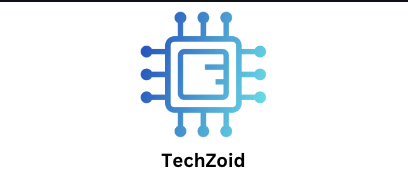1. Increased Productivity and Efficiency
Automating repetitive HR operations is one of the main advantages of an HRIS system. HR departments may be slowed down by laborious administrative tasks, paper-based documentation, and manual data input. By digitizing procedures like payroll management, leave tracking, and benefits administration, HRIS removes these inefficiencies. HR specialists are freed up by this technology to concentrate on key projects like employee engagement and talent development.
2. Improved Precision and Decreased Errors
HR departments handle sensitive employee data, such as compliance records, compensation information, and personal data. Errors and inconsistencies are more likely when this data is managed by hand. By automating computations, updating records instantly, and minimizing human error, an HRIS system guarantees accuracy and data integrity. Payroll processing, compliance monitoring, and performance reviews all improve as a consequence.
3. Data Management in One Place
For all HR-related data, an HRIS serves as the only reliable source. Organizations may store personnel data, policies, and reports in a consolidated database rather of keeping several spreadsheets or paper files. This increases data accessibility, which facilitates managers’ and HR professionals’ ability to swiftly obtain the information they need. Additionally, centralized data management improves security and confidentiality by shielding private data from unwanted access.
4. Regulatory Assistance and Compliance
Companies have to abide by industry-specific legislation, tax laws, and labor requirements. By making sure that all required paperwork, tax returns, and personnel records are current, an HRIS system automates compliance tracking. A lot of HRIS systems also come with integrated compliance tools that notify HR departments of impending due dates, modifications to policies, or paperwork needs. This lowers the possibility of fines and legal problems for noncompliance.
5. Simplified Onboarding and Recruiting
Posting jobs, monitoring applicants, conducting interviews, and onboarding are all part of the time-consuming recruitment process. By automating job advertising, resume screening, and applicant monitoring through several recruiting phases, an HRIS system streamlines the hiring process. By giving new recruits self-service portals to finish paperwork, consult business regulations, and familiarize themselves with their positions prior to their first day, HRIS also expedites the onboarding process. This lowers employee turnover in the first few months by guaranteeing a seamless and satisfying onboarding process.
6. Improved Self-Service for Employees
Employee self-service portals, a feature of contemporary HRIS systems, let staff members view their salary information, leave balances, and benefit data without contacting human resources. This lessens the administrative load on HR departments while also increasing employee happiness. Workers may easily obtain paystubs, seek leaves, and update their personal information, encouraging an independent and transparent workplace culture.
7. Making Decisions Based on Data
HR specialists and management may make well-informed decisions because to the real-time analytics and reporting capabilities that HRIS systems offer. These systems produce information on workforce planning, training requirements, employee performance, and turnover rates. Organizations can improve HR strategy, spot trends, and put policies in place that boost output and employee happiness by having access to data-driven reports.
8. ROI and Cost Savings
By decreasing administrative overhead, lowering payroll mistakes, and enhancing compliance, the implementation of an HRIS system results in long-term cost benefits. Even if there is a one-time cost, the ROI is substantial because of the enhanced labor management, decreased paperwork, and increased efficiency. Automation also optimizes resource allocation by lowering the demand for extra HR staff.
9. Employee Development and Performance Management
Performance management modules are frequently included in HRIS systems to assist with goal-setting, employee progress tracking, and reviews. These tools enable managers to pinpoint talent shortages, suggest training courses, and give prompt feedback. Organizations may promote ongoing staff development and increase productivity and work satisfaction by integrating learning management systems (LMS) into HRIS.
10. Flexibility and Scalability
Organizations’ HR requirements get more complicated as they expand. Because an HRIS system is flexible and expandable, companies may modify its features to suit the needs of their industry and workforce size. An HRIS system can adapt to changing HR requirements without interfering with business operations, regardless of whether a firm is growing its personnel or breaking into new markets.
Conclusion
An HRIS system is now required for businesses looking to better labor management and HR operations, not just a luxury. An HRIS saves time, lowers expenses, and increases productivity for firms by automating HR operations, guaranteeing compliance, and offering insightful data. Purchasing an HRIS system will be a wise strategic choice for businesses hoping to improve their human resource operations and obtain a competitive edge as technology develops further.
